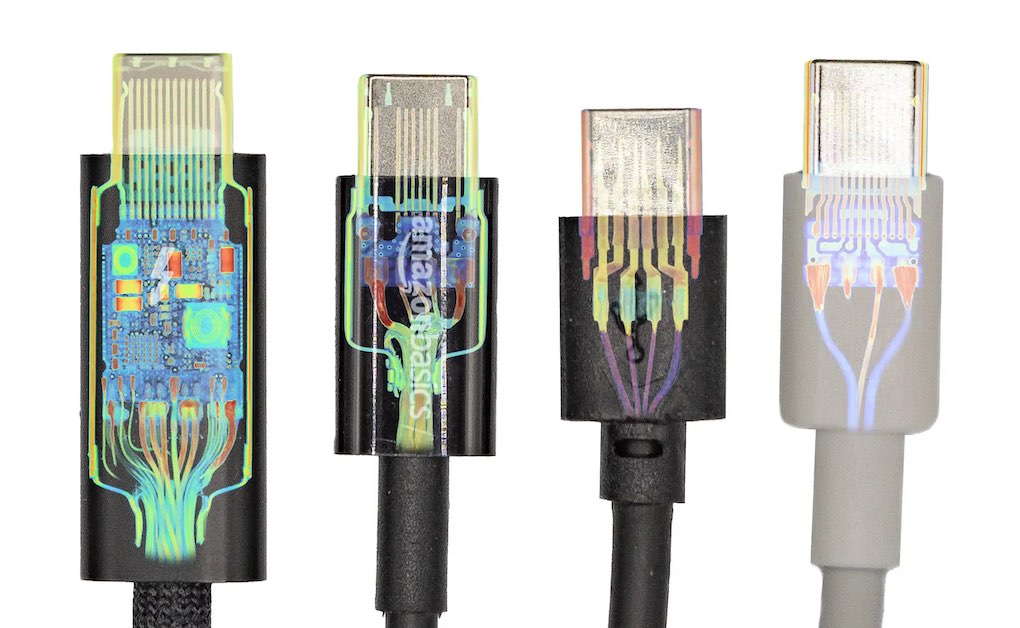- in Production by Bobby Owsinski
Maybe Those Pricey Apple Cables Are Worth It After All
When it comes to connecting cables and adapters, Apple cables have always been way more expensive than the alternatives that you could buy online – sometimes by as much as 10 times. “Cables are cables” I hear you say, and in some cases that’s definitely true, but in other cases, not so much. The fact of the matter is that Apple cables always work, and now we have proof why.

As you can see from the image scan above by Lumafield, the Apple Thunderbolt 4 cable on the left is a precise piece of engineering, with a host of electronics built into the connector to ensure the fastest data transfer. The other three cables from Amazon, NiceTQ, and Atyfue aren’t in the same league as the Apple cable, just in terms of the electronics inside. What’s more, every one of the 24 pins were being used in the Apple cable, while the ones on the right had only 4 and 3 pins used (granted, these are best used as USB-C charging cables). Which one of the four do you think will perform better?
Not only that, the Apple cable had metal shielding and a strong strain relief as compared to the others. The metal shielding is important, as I most recently found out. Having upgraded my studio to a new Mac Studio, I was perplexed by a speaker hum that wasn’t there before. After changing all the audio cables, I started to replace the computer cables. Yep, an Apple T-4 cable fixed the issue with ease.
Now here’s the rub – The 3 meter Apple Thunderbolt 4 cable retails for $69 while the cheap versions mentioned are around $10. Of course everyone would go for one of the cheaper ones, and in some cases they’ll work, but you certainly won’t get the same data transfer rates and you may run into audio noise problems as well.
I think the scans tell the story that you’re paying a premium for Apple cables, but you’re definitely getting what you paid for.
For more tell-tale scans, go to Lumafield.

